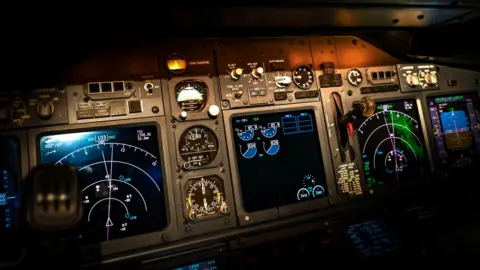The preliminary investigation into the tragic crash of Air India Flight 171, which resulted in the deaths of 260 passengers and crew in June, presents unsettling findings. Shortly after takeoff, the aircraft—a 12-year-old Boeing 787 Dreamliner—suffered a catastrophic failure when both fuel-control switches shifted to the "cut-off" position, depriving the engines of fuel and causing total power loss. These switches, moved typically only after landing, have raised alarming questions following a cockpit audio recording where one pilot questions the other about the switch's activation.
The investigation outlines that the flight, having ascended to 625 feet amid clear weather, lost its location data within just 50 seconds, culminating in a crash in a densely populated area of Ahmedabad. Insights from authorities—encompassing experts from Boeing, GE, Air India, Indian regulators, and international safety boards—are delving deep into the wreckage and cockpit recorders to decipher the events that transpired immediately following takeoff. A recent 15-page report suggests that the levers of the fuel switches are specifically designed for safety, requiring a determined action to activate them, thus making the occurrence of accidental movement unlikely.
Differences in opinion regarding pilot actions are emerging. Aviation expert Shawn Pruchnicki posits that the circumstances surrounding the switch movements appear too clean-cut for an accidental cause. He suggests the need for investigative clarity on whether the action was intentional or accidental, arguing that pilots typically communicate during emergencies, but no such indicators of confusion were present. Former NTSB Managing Director, Peter Goelz, supports this sentiment, calling the reports distressing while emphasizing that forthcoming details from the cockpit voice recorder will be vital in determining the responsible party for the switch activation.
The investigation also indicates a concerning relationship between the Boeing fuel-control switch system and a previous FAA bulletin which flagged potential issues with similar designs but did not warrant emergency action. Investigators are examining possibilities that an electronic malfunction could have caused the switch deployment and are awaiting results on whether such a fault could exist in the Dreamliner model involved.
Additional insights reveal that during the rapid descent, the pilots attempted to reignite the engines, yet the lack of altitude and adequate time rendered their efforts fruitless. Notably, aviation sources pointed out the operational features of Boeing aircraft that corroborate the need for immediate response overlaps with dire mechanical malfunctions. As investigations proceed, further analysis of the cockpit's audio is expected to shed light on the mystery of what transpired in those fatal moments.





















